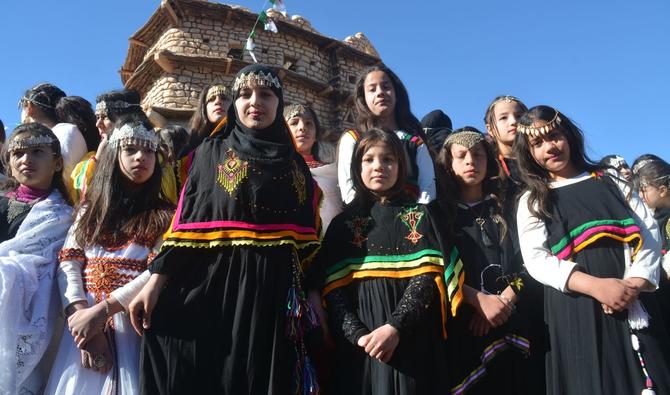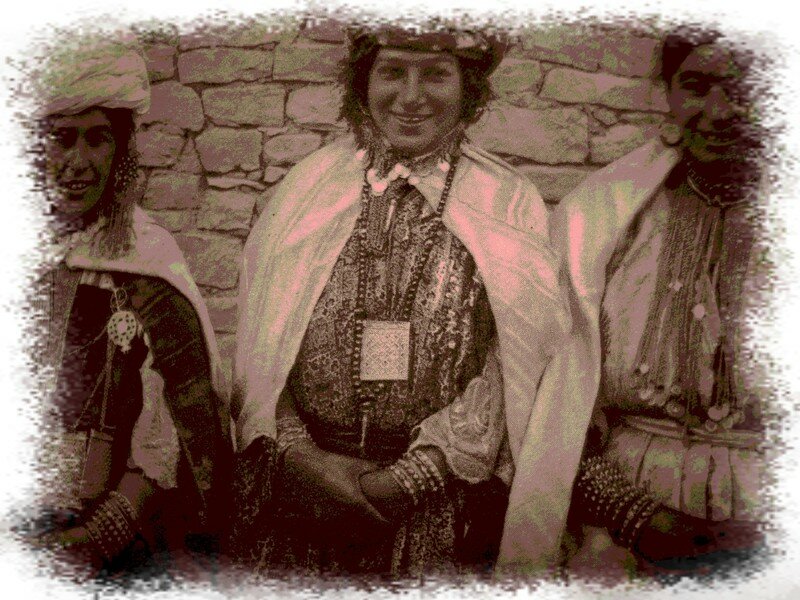5 fascinating things to discover about the Chaoui people

5 fascinating things to discover about the Chaoui people
The Chaoui people have developed a rich and diverse culture, shaped by centuries of history in the very heart of the Aurès, a mythical landscape in north-eastern Algeria. Descendants of the Numidians, the Chaouis now number around 3 million. Their language, Chaoui, belongs to the Berber family of Zenet languages. Most are Sunni Muslims, but their culture retains traces of ancestral traditions. Far from the beaten track, the Chaoui heritage conceals unsuspected treasures. From spellbinding music to finely-crafted jewellery, tasty cuisine and unique traditions, every aspect of this culture is worth discovering. Immerse yourself!
A people with a thousand years of history

The Chaoui people, proud of their Berber origins, trace their roots back to the Numidian tribes who inhabited the Aurès region in ancient times. These tribes included the Aurès, the Chaouis, the Nememcha and the Ouled Abderrahmane. Over the centuries, its culture has been enriched by Roman and Arab influences, creating a unique heritage.
The Roman invasion in the 2nd century BC marked a turning point in the history of the Chaoui people. The invaders subjugated the Berber tribes and imposed their culture. It was at this time that Latin was introduced to the region, which influenced the Chaoui language.
The 7th century: the Arab invasion
The Chaouis suffered another invasion in the 7th century, this time from the Arabs. Kahina, the legendary Berber queen, played a crucial role in resisting this invasion. She led a Berber army against the invaders and managed to repel them for many years. Her courage and determination made her an emblematic figure of Chaoui culture.
In the same century, the people adopted Islam as their religion, which had a major impact on their way of life. Among other things, the Muslim religion brought with it new traditions and customs, which were integrated into the Chaoui culture to create the strong mix that exists today.
The Chaouis and colonisation

The Chaoui people have experienced other key events that have shaped their identity and heritage. Resistance to French colonisation in the 19th century, the Algerian War of Independence (1954-1962) and the Algerian Civil War (1991-2002) are the most recent examples.
Meanwhile, Cheikh Bouamama, a leading figure in the resistance to French colonisation, like La Kahina, also left his mark on the history of the Chaoui people. He led a revolt against the French in the Aurès from 1881 to 1883. His resistance inspired other liberation movements in Algeria.
The Chaoui language: a treasure to be preserved
Chaoui is a Berber language spoken by around 3 million people in the Aurès region of Algeria. It has unique phonetics, grammar and vocabulary that distinguish it from other Berber languages.
The phonetics of Chaoui are characterised by the use of guttural consonants and long vowels. The grammar is complex, with a variety of grammatical cases. The vocabulary is rich and includes many words of Berber, Arabic and French origin.
Unfortunately, Chaoui is a language threatened by Arabisation and globalisation. Fewer and fewer young people speak it fluently, and its use is declining in the public and official spheres.
Nevertheless, learning Chaoui remains an excellent way of discovering Chaoui culture and helping to preserve it.
Traditions and cultural expressions
The Chaoui people have a rich cultural heritage, manifested in a variety of artistic and traditional expressions. Music, dance, crafts, architecture and gastronomy are all areas in which Chaoui culture expresses itself with strength and beauty.
Music

Chaoui music is known for its exceptional rhythms and poignant melodies. Among the most popular traditional instruments are the flute, lute, tambourine and drum. Music is omnipresent in the lives of the Chaoui people, providing the rhythm for festivities, ceremonies and everyday life.
Dance
Cultural events in the Chaoui milieu are marked by highly expressive and varied dance steps. They often reflect the joys and sorrows of daily life, as well as the rites and traditions of the Chaoui people. The best-known dance is undoubtedly the ahidous, a collective dance to the rhythm of the drums and gumbris.
Crafts
Chaoui handicrafts are of great finesse and diversity. The most popular crafts are jewellery, carpets and pottery. The motifs and colours used in Chaoui crafts are often symbolic and carry messages.
Architecture
Chaoui architecture is also unique and remarkable. Traditional houses, built of stone and earth, are often grouped together in fortified villages known as "ksour". The ksour are striking examples of how the Chaoui people have adapted to their mountain environment.
Gastronomy
Chaoui cuisine is based on local produce such as wheat, barley, vegetables and fruit. The best-known traditional dishes include couscous, rechta (thin pastry), taguella (meat broth) and merguez (sausages).
Passing on know-how
Passing on know-how is a fundamental value in Chaoui culture. The elders play a crucial role in this process, sharing their knowledge and skills with the younger generations.
Tales, proverbs, songs and handicrafts are all vehicles for passing on Chaoui traditions and know-how. Through these forms of expression, the values and history of the Chaoui people are passed down from generation to generation.
Education and learning are also very important in Chaoui culture. School is an essential place for passing on knowledge, but learning also takes place within the family and the community.
An endangered heritage
Chaoui culture is under threat from a variety of factors. Globalisation, the rural exodus and the loss of the language are all threats to this unique heritage.
Economic and social development is also having a major impact on Chaoui traditions and lifestyles. Urbanisation and industrialisation tend to standardise cultures and marginalise local traditions.
As a result, there is an urgent need to take action to protect the Chaoui heritage, to raise awareness of the richness and value of this culture, and to take practical steps to safeguard and promote it.
